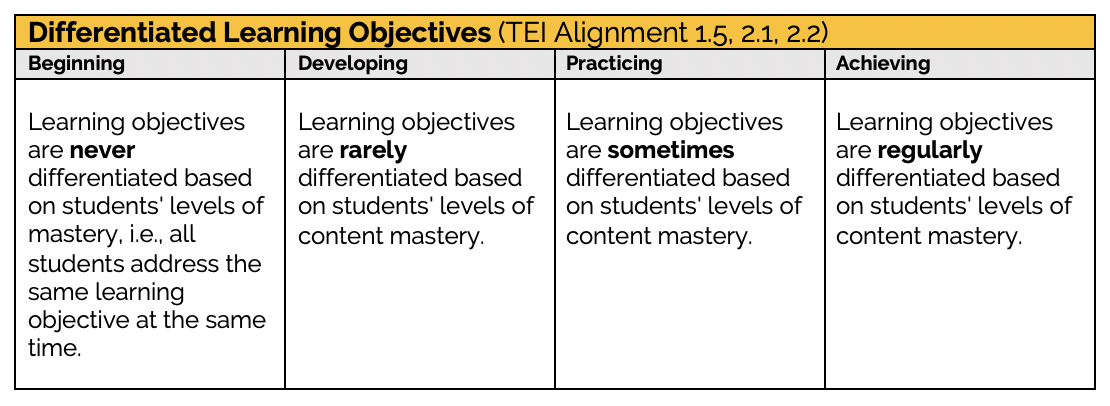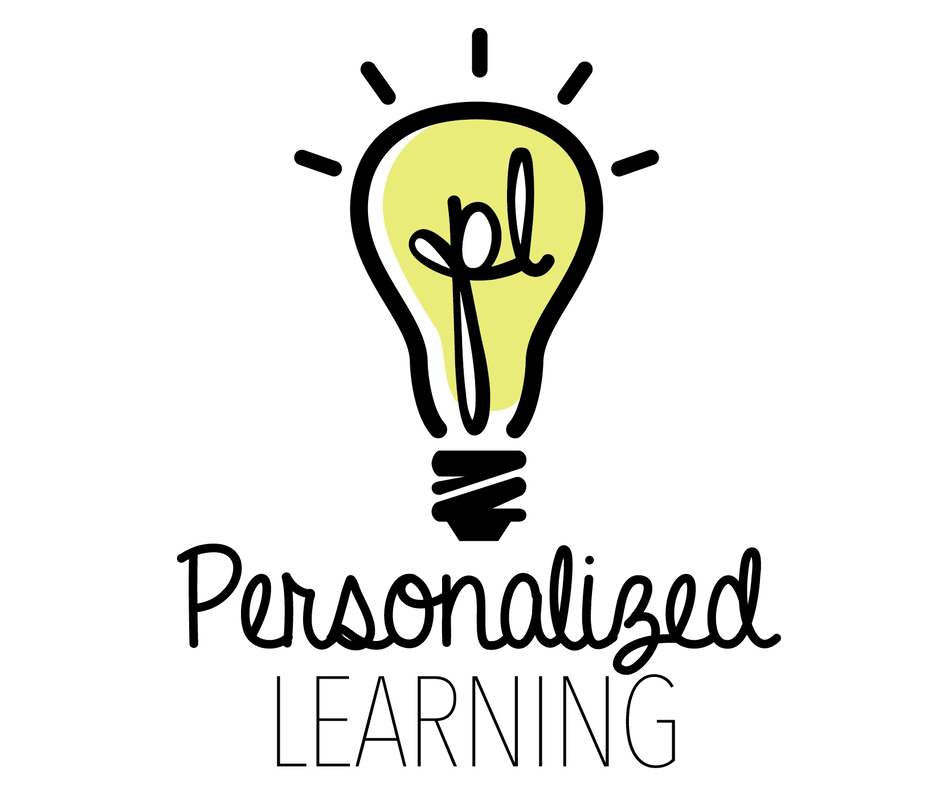Instructional Rigor
Phase 2
"Look-Fors" During Observation
Remember: The most helpful part of the observation is not checking off items, but the conversations and reflections that happen after the visit.
Remember: The most helpful part of the observation is not checking off items, but the conversations and reflections that happen after the visit.
|
Beginning/ Developing
|
Practicing/ Achieving
|
Questions to Guide Observation
- Is one or more LO evident in the classroom (either on the wall, at a station, or on a virtual platform)? If so, is the LO differentiated to address various student needs and goals?
- Can students define the LO in their own words, describe why it’s important, and identify how it’s aligned to their individual needs and goals?
- What trends do you notice over time when observing?
Resources
- Using a Learning Target Throughout a Lesson, demonstrates purposeful integration of a learning objective ("learning target") throughout a kindergarten lesson (Video from EL Education)
- Students Unpack a Learning Target and Discuss Academic Vocabulary, example of how a 6th grade class dissects an LO for understanding before beginning a lesson (Video from EL Education)
- Learning Objectives: The Heart of Every Lesson, includes explicit instructions on how to craft a strong LO; distinguishes between a goal and an LO (Article: Effective Teaching by Harry & Rosemary Wong)
- Structure Learning with Essential Questions, describes another way to consider anchoring your lessons, personal learning paths, etc. (Video from Teaching Channel)
- SWBAT: Communicating Learning Goals, quick video clip demonstrating how a teacher uses SWBAT in her classroom (which could also be applied to small groups) (Video from Teaching Channel)
- Introduction to Differentiation: In this video, Dr. Carol Tomlinson will continue with her presentation on classroom examples of differentiation. She will show how differentiated instruction and understanding by design can work together to provide the structure, tools, and guidance for developing effective instruction and assessment.
| Differentiated Learning Objectives, Coaching Tool | |
| File Size: | 733 kb |
| File Type: | docx |
| Differentiated Learning Objectives, Coaching Tool | |
| File Size: | 219 kb |
| File Type: | |


